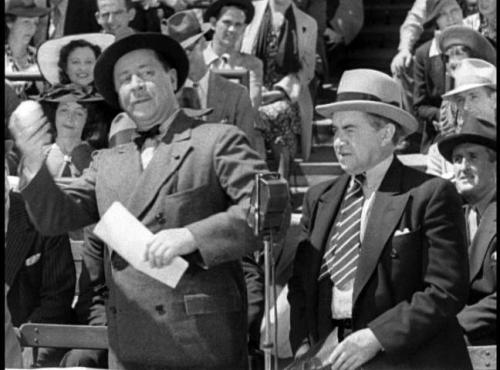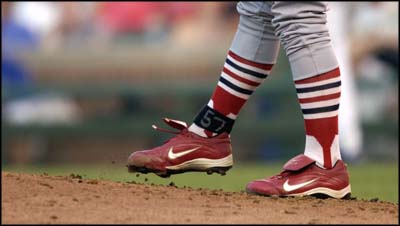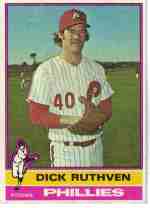It doesn’t yet feel like Opening Day in Pennsylvania, since this is roughly the 45th of a forecast 60 straight days with a high in the mid-40s, but that’s what it is. Time to wing that ceremonial ball into the Allegheny and inspect the comic short Opening Day (Roy Rowland, 1938).
I saw a couple of Robert Benchley’s short films in my youth, but have always thought of him as a writer only. My parents had a trove of old humor collections, and Benchley was my favorite, aside of course from Dave Barry, the Benchley of his day. Thurber — too sad. S.J. Perelman — too cynical, and usually requires familiarity with the things he’s spoofing. Jean Kerr — hilarious, but at age 11 I didn’t identify with her struggles to keep up with other wealthy mothers in the early sixties. Erma Bombeck — kind of repetitive. Or as I now realize, extremely repetitive, though she made me hope strongly that the E.R.A. would be ratified soon. Clarence Day — too corny. Will Rogers — basically a bunch of obviously true statements, similar to the Meditations of Marcus Aurelius. E.F. Benson — hilarious and may have introduced me to the concept of the “unreliable narrator”.
Benchley — perfect. Why? Because of the silliness. The roundups of scientific findings are written in the kind of baffled style that suggested little of either intellectual ambition or anti-intellectualism. Parodies of The Good Earth, Wagnerian opera synopses, and travel writing about the childlike natives of Spain may not be spot-on like Perelman’s stuff, but they have endless randomness for the delight of all. The offhand names he comes up with for things stick with me. Minerals called “nergium” and “philutium”, a typical flower called “MacNerty’s Fields-Awash”, a bestselling book called “How to Decorate Your Mergenthaler Linotype Machine”, go-getting businessmen named “Kleek” and “Billigs”. The brilliant business start-up slogan “MacGregor and Benchley: Fine Frogs for Fussy Folk”. Dampfboot, tinsmith to the gods. Brilliant poet Lingard M. Lilacs.
Now the winter wore on, and it was still the birthday of Whang the Gong, for Whang the Gong liked birthdays, for birthdays are holidays and holidays are good. And Rum Blossom, his wife, came to him and said, lowering her eyes as she pulled the stump of an old tree and threw it into the wood-box, “I am going to have another baby.” And Whang the Gong said, “That is up to you.” And he rolled over and shut another eye, which was his third, kept especially for shutting. So Rum Blossom went into the library and had another baby. And it was a woman, or slave, baby, which, in China, is not so hot.
Benchley’s persona in his short essays is the typical middle-aged middle-class white-collar New Yorker between the World Wars, or he thinks he’s typical. A man who went to college, but not an Ivy League, maybe Hobart College or Bucknell [Benchley himself was a Harvard Lampoon alum]. A man who came to New York from a provincial city, enjoys the theater, is bemused by opera, and doesn’t see the appeal of motion pictures. He prefers an old-fashioned Christmas with ice-skating and sleigh rides to any vacation involving palm trees or a swimming pool. He follows college football, goes to horse races because his friends do, and looks down on baseball somewhat. His wife is educated and might be an editor or something. His frustrations include unbearably hot vacation trains, his sons’ bratty wealthier boarding-school chums, and the chaos of trying to meet friends arriving on a transatlantic steam liner.
—
Most of Benchley’s short films were made for MGM, some based on his columns and almost all written by him. Most or all are 8 to 11 minutes long. In the typical Benchley short [How to Sleep, How to Eat, A Night At the Movies, That Inferior Feeling], he’s the wry, faux-instructional narrator, describing the activities of a bumbling everyman [e.g. Joe Doakes] played by himself.
Then there’s the ones where he addresses the camera. The Romance of Digestion and The Courtship of the Newt are nonsensicalist spoofs of the science/nature documentary in which an expert uses charts and exhibits to lead the viewer through the basics of some subject. And occasionally he’s the pompous figure of fun, a Michael Scott type who blathers on with a combination of unintentional comedy and unctuous failed jokes. This describes his first theatrical appearance, The Treasurer’s Report [made for Fox], a filmed version of a comedy routine done for friends. What about Opening Day? Just as his early Fox film The Sex Life of the Polyp was adapted by MGM as The Courtship of the Newt with better production values, this is a repackaging of The Treasurer’s Report.
The plot: It’s the grand opening of the City of Sneeversport Municipal Park, with the hometown team about to start the season against Center Rusk. Mr. Benchley, city treasurer, is drafted to throw out the first pitch, in the absence of the honorable mayor George X. Peebles. But first, he’d like to deliver some words of welcome.
The speech: He bloviates in dry terms about the budget and the community. His vague and distracted comments are unpredictable, yet fall short of captivating. He uses the business buzzwords of the time, like the Babbitts Benchley parodied in his columns.
The response: A mass deadpan display of fidgeting that I found hilarious. At one point everyone applauds to get him to stop talking*. Players on the field sleep, do invisible-bicycle aerobics and play Hot Hands. There are three speaking characters — Benchley, a local grandee who introduces him [the team owner?], and a heckler played by the flinty John Butler of a billion other MGM shorts fame. [Here’s a piece about one of their “Crime Does Not Pay” two-reelers.]
Benchley: There is just one point that I would like to make, though, before we get on with this baseball game, which I suppose some of you are more interested in than in the condition of the city’s finances. But that one point is this. that for every cent you pay in taxes, you get an equivalent return in civic improvements.
Heckler: THAT’S TELLIN’ EM, BIG BOY!
Benchley: Thank you, my friend.
—
What are players like? Playful. The Sneeversport logo is a big “S”, and they wear multi-striped stirrups like today’s Cardinals or the 1956 Beavers. [Thanks, Uni Watch.]
What are managers like? N/A
What are umpires like? N/A
Is “Take Me Out to the Ballgame” played over the credits? Strangely, no.
Any cameos from big-leaguers? You know, I wouldn’t be surprised. But not even John Butler is listed in the credits, so it’ll remain a mystery.
Climactic game? No, but there’s an exciting surprise at the end.
Was it filmed at Los Angeles’s Wrigley Field? It was! It has that pilaster-studded LF wall you can see in the top photo here, and also visible are the “345” and “412” markings in left center and deep center. Add it to the list.
Will it wow me, the modern viewer, with its documentation of a bygone age, and if so, how? Well, he throws the pitch while standing in the front row of the crowd, instead of shambling over to the mound to bounce one over the plate. Somewhere along the decades this became accepted practice only for ceremonial hurlers who are superannuated or enfeebled.
We chose Friday April 11th because that was the anniversary, or rather is the anniversary, of the acquisition of Sneeversport from the Indians. I don’t think many of us here know the actual conditions surrounding the deal made with the Indians at that time. The Indians, as you know, held most of the land between what is now Main and Elm Streets. They weren’t very large Indians — would you mind standing up, Dr. Detweiler? — About the size of Dr. Detweiler, I should say, ha ha ha — but they did hold this land, and there seemed to be no way of getting them off it. Their chief was a man named Ekstrom, or Bergquist, or something like that — which being translated means “Chief Big So-and-so”. And he was a very good businessman, for such a small Indian.
—
* This happened repeatedly at my college graduation. Why? Nobody could hear the speaker. Literally, nobody could hear him. At the beginning, people less than fifty feet away could hear him. There were about 15,000 people there. Most couldn’t hear him from the start, and once a few started talking, nobody at all could hear him. It was a real shame.
—
- [earlier in “Baseball Movies”: Alibi Ike, Death on the Diamond, Kill the Umpire]



















